
The iroha Nadeshiko Series: Talk About Pink - When did Pink Become A Girl's Color?
On March 27, 2019, we held the event, Talk About Pink - When did Pink Become A Girl's Color?
For those who were unable to attend, here are the details of the event!
Contents
- Pink from the Perspective of Fashion and Society
- A History of Pink Being A "Girl's Color"
- Pink has Become A Complex Color for Women
- Embracing Pink: A Journey of Personal Feelings
- Pretty in Pink: Makeup and Fashion Tips
- In Closing: iroha Nadeshiko Colors and Pink
Pink from the Perspective of Fashion and Society

This event commemorated the launch of the "iroha Nadeshiko Color Series," pink-colored versions of eight existing iroha products. In a society where the perception of pink is as a "girls color", wearing pink can sometimes be perceived as "forced" femininity for some.
Therefore, iroha wanted to create an opportunity to think about the relationship between women and pink by looking at the historical background in which pink was considered a girl's color, and talking about pink from various perspectives.
Our guests were Ayako Sasanuma, editor-in-chief of the monthly women's magazine 'ar', which created buzzwords such as "ophero"* and "mesu girl"**, and Nami Yoshida, a writer who mainly works on romance-related projects for women's magazines. Also joining the lively hour and a half discussion was our own public relations officer, Ms. Nishino.
*ophero is a combination of the words "[o]share"= fashionable and "[phero]mone", describing fashion term for elements that attract the opposite sex. **mesu girl is a combination of the words "mesu", meaning female, and "girl", describing someone who has feminine sexiness within their cuteness.
This was the perfect time for this event, as the cherry blossoms were in full bloom, covering the country with their beautiful pink color. The venue was lit up in pink to match the Nadeshiko Color Series, and all the speakers were dressed in pink, while enjoying pink cocktails.
A History of Pink Being A "Girl's Color"
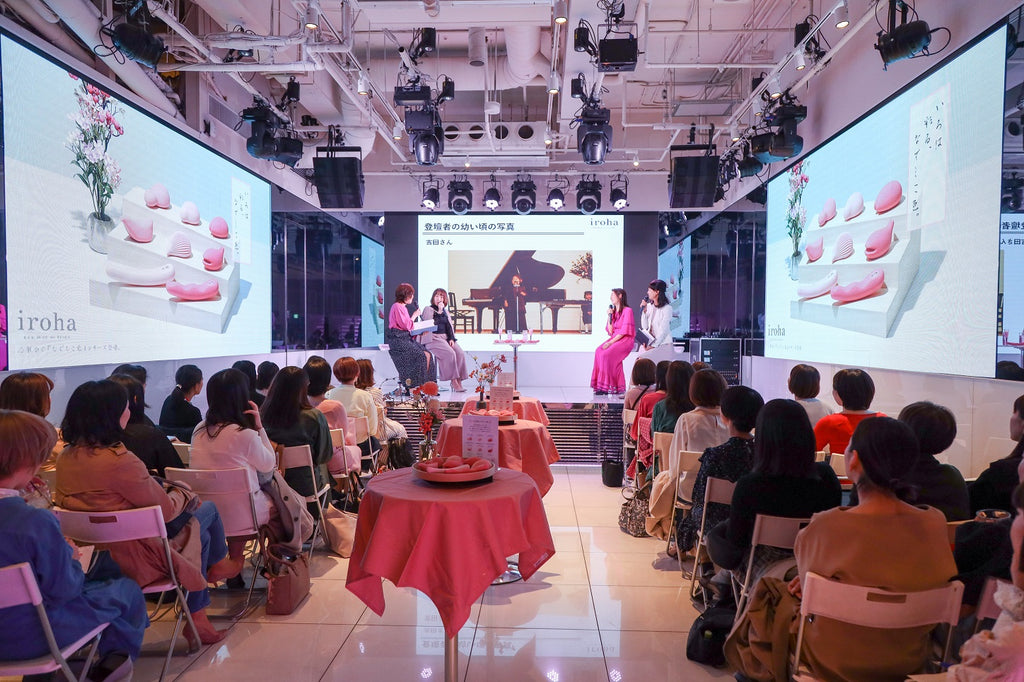
In the first half, Ms. Nishino shared the history of pink, referring to the book "Do Girls Really Like Pink?" written by Hidemi Horikoshi. Please check out the book for more details! (only in Japanese)
The idea that pink is a girls color originated in 18th century France, when the Rococo culture was in full bloom. Famous figures, such as Marie Antoinette and Madame Pompadour, made pink all the rage. It is said that pink was connected to the culture around France and spread throughout Europe.
After World War II, the influence of Hollywood actresses and movies led to the worldwide recognition that pink was a color that men preferred to see on women.
On the other hand, in Japan, wartime magazines often used "cute-sounding" words for pink in an attempt to circumvent government censorship on adult material, ultimately creating the impression that pink equals obscenity. Even now, there are terms such as "pink movies" (adult movies) and "pink pages" (sports newspapers and other newspaper sections featuring erotic or sexually suggestive content).
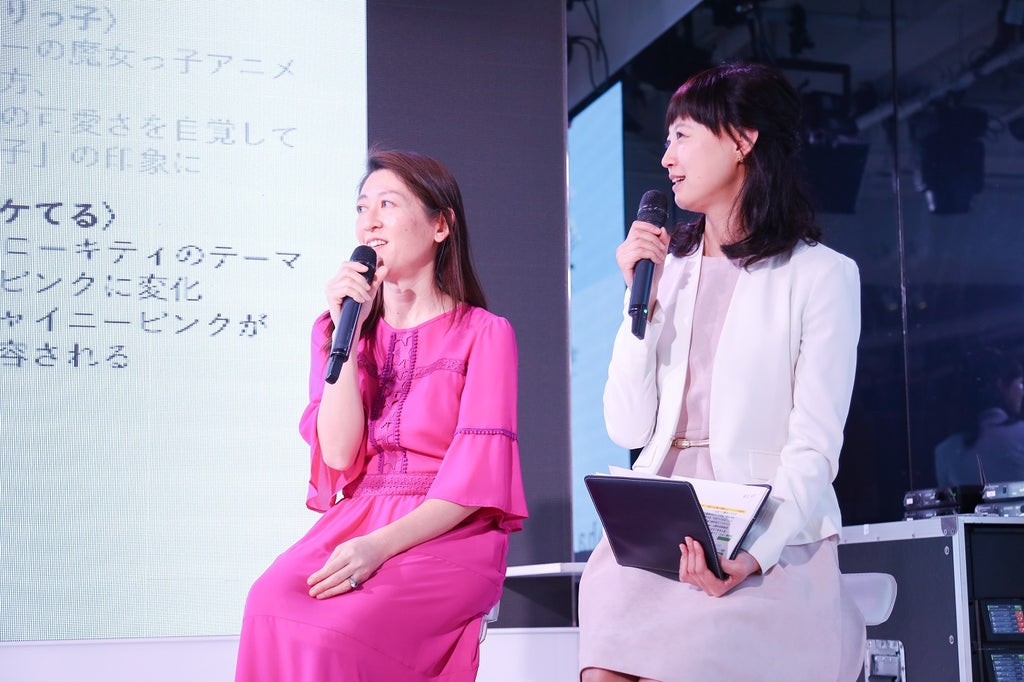
(From left: Ms. Sasanuma, and Ms. Nako Sekimoto, who served as the moderator)
Pink has Become A Complex Color for Women
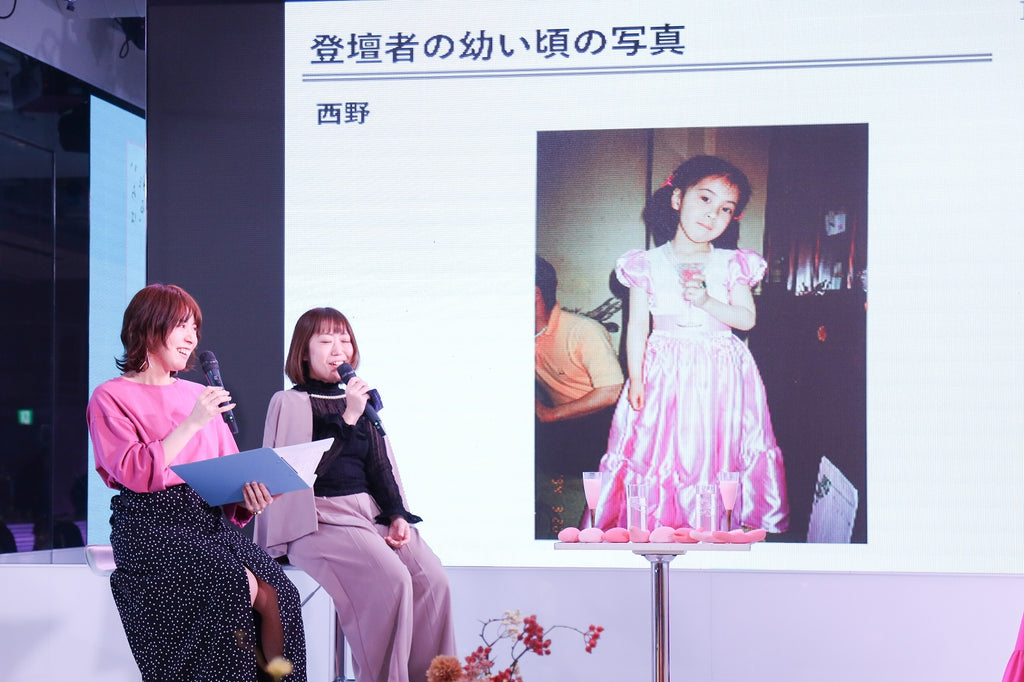
(From left: Ms. Nishino, Ms.Yoshida)
We also borrowed childhood photos from the three speakers and asked them about the thoughts and feelings they had for the color pink. Ms. Yoshida looks back on a childhood photo of herself in a dark purple dress, calling it "traumatic."
When her family went to a department store to choose a dress for her to wear to a piano recital, she was asked if she wanted a pink dress or a dark purple dress.
Her father encouraged her to wear purple. At the time, she was unable to say, "I really want to wear pink." As a result, she grew up eventually hating pink.
There was a noticeable contrast between the childhood photos of Ms. Sasanuma and Ms. Nishino. Ms. Sasanuma was wearing a pink dress and smiling as an elementary school student. Ms.Nishino was also wearing a pink Disney princess dress, but with a rather sad face!
In a survey conducted by iroha, 30% of the people said they were reluctant to incorporate pink into their fashion. (n=1009)
Furthermore, according to a survey by the Japan Color Research Institute (2009), 19% of second grade girls ranked pink as their "least favorite color," and 5th and 6th grade girls listed it as their second "most favorite color." In another survey conducted by JS Corporation's "White Paper on High School Students" (2009), pink was ranked 1st as "favorite color", but also 2nd as "disliked color" among female high school students.
For Japanese women, pink is a color that polarizes people. It's not just a matter of preference, but the widespread belief that pink is a "girly" color. It seems that the color has become something that people have complicated and mixed feelings about.
Still, pink can be a very attractive color. How can we wear it without being easily traumatized? We asked Ms. Yoshida about her state of mind regarding the color, and Ms. Sasanuma about the fashion side.
Embracing Pink: A Journey of Personal Feelings
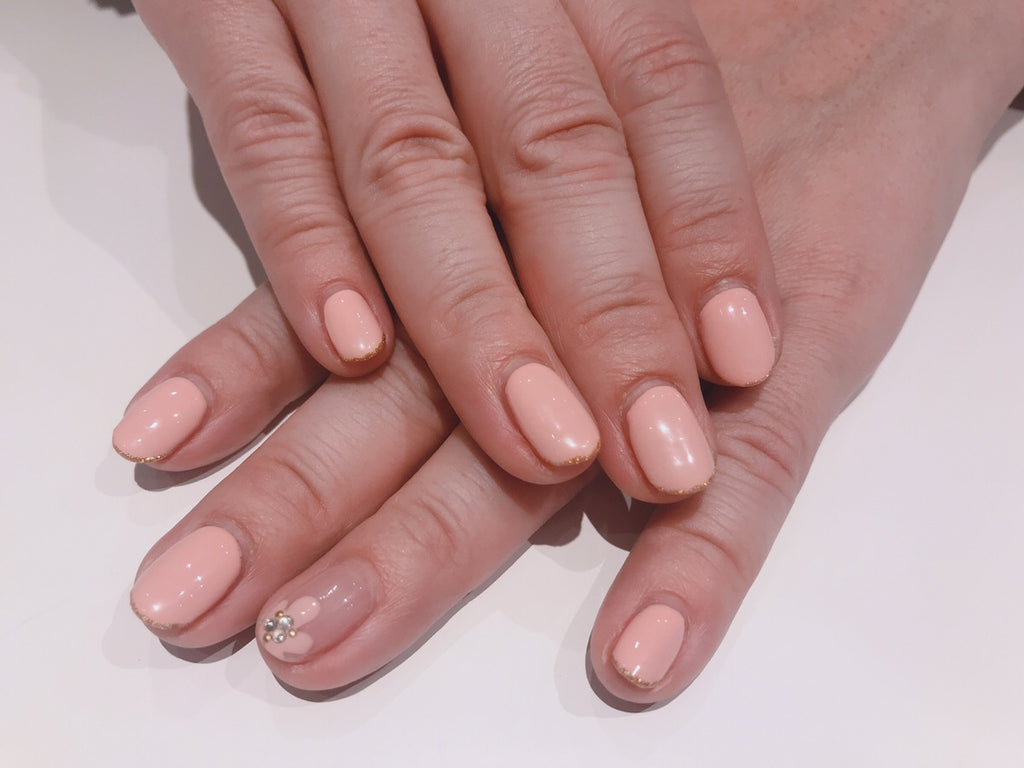
Ms. Yoshida said that she had mixed feelings about pink due to her childhood experiences, but now she has changed her mind so much that almost all of her accessories are pink.
Ms. Yoshida had always suppressed her desire to wear pink, "It doesn't suit me, I told myself. But one day I thought, why do I have to live a life where I'm the only one who suffers from not wearing pink?"
However, my heart was shaken by conflict. "If you suddenly start wearing pink when you haven't worn it before, people around you might ask, 'Why all of a sudden?'"
And the conclusion I came to was to make an excuse. If I'm asked the question about wearing pink, I thought, "In Feng Shui, pink is the color that facilitates human relationships. That's how I'll answer."
The first pink item she chose was for the color of her cell phone. After that, she says she has loved using the pink color, as if a dam had burst open. By initially making up an excuse, she was able to take the first steps towards feeling at peace with her decision. She said she felt like a weight has been lifted from her shoulders because she was able to wear pink, which she actually loved.
She had lovely pink nails on this day too!
Pretty in Pink: Makeup and Fashion Tips
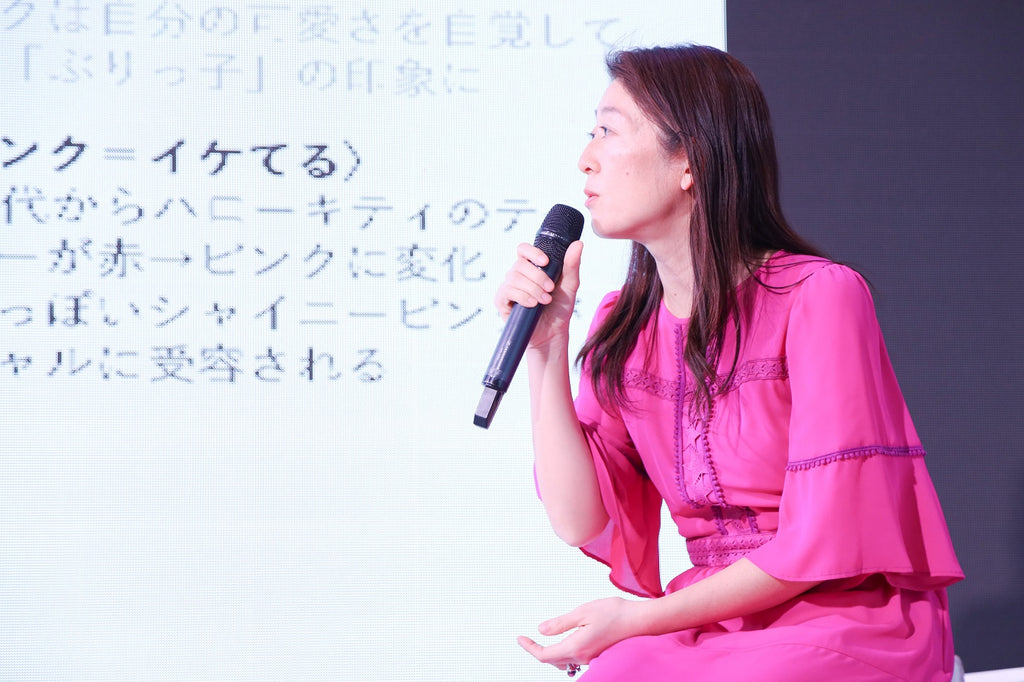
We asked Ms. Sasanuma, ar Magazine editor-in-chief, for advice from the perspective of makeup and fashion. Sasanuma herself seems to think of pink as something that "brightens my mood."
The layout of our magazine often uses pink to convey a "dreamy view of the world."
For those who are reluctant to wear pink, it can be easy to incorporate pink into accessories, like Ms. Yoshida's cell phone. "Many people may be reluctant to wear soft pink materials (such as dresses made of chiffon)," she said. As an alternative, Sasanuma suggested wearing accessories, such as belts and caps.
Also, t-shirts can be easily incorporated as unisex items.
We also asked about trends. The current trend is "dull pink," which blends well with skin tones, and projects an urban image. Using pink as the base color of your makeup will give you a "happy face," and using pink around your eyes will give you a sexy look. Definitely try to incorporate it somewhere! Also, when you apply bright pink near your face, it seems to brighten up your whole face.
Well, that concludes the event. From society's image of pink being considered a "girl's color" to discussions on fashion, we covered a wide range of topics. Our thanks to Ms. Yoshida, Ms. Sasanuma, and everyone who participated!
In Closing: iroha Nadeshiko Colors and Pink
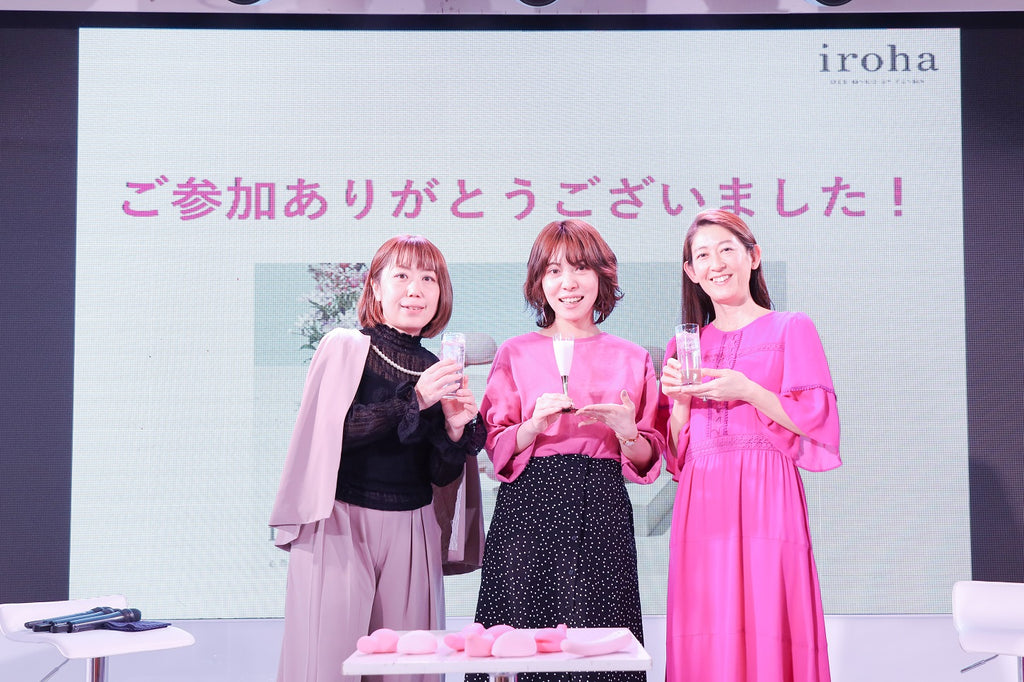
The nadeshiko flower (Dianthus superbus) is one of Japan's Seven Autumnal Flowers. It is said that there are about 300 different varieties of it. From delicate and gentle colors to passionate primary colors, the many different shades can be seen as representative of the different aspects of women in the world.
The new iroha series is inspired by the charm and beauty of women.
With the release of the "iroha Nadeshiko Color Series," we felt it would be a shame if women felt uncomfortable about wearing pink. That is why we planned this event.
In closing, one speaker mentioned that it's only been 70 years since pink has been seen as a girls' color, and all the controversy that entailed. We hope you can now choose a pink you like and enjoy it, without worrying about what anyone else might say or think!
We would be overjoyed it if everyone chooses the color they love, and would love to keep meeting all you bright and beautiful people!


